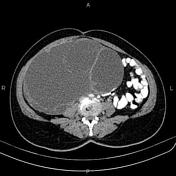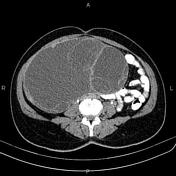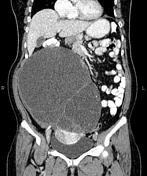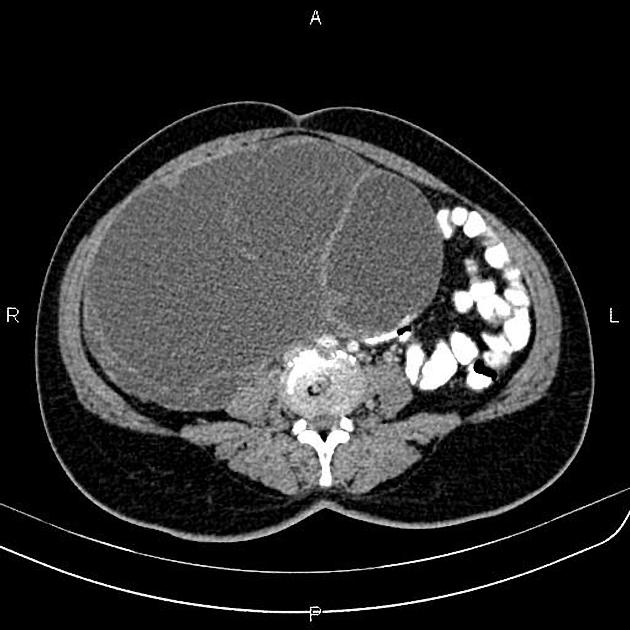Presentation
Abdominopelvic pain and progressive distension.
Patient Data









A 236×137×226 mm multiseptated cystic lesion is present at right pelvis that extends superiorly until the level of pancreas. There are no sign of local invasion to adjacent structures and no regional lymphadenopathies. The right ovary couldn’t be defined separate than mentioned cystic lesion.
The uterus contains a few fibroids.
Degenerative changes as osteophytosis are seen at the lumbar spine.
Case Discussion
Right ovarian multiseptated cystic lesion; pathology proven ovarian serous cystadenoma which is a type of benign ovarian epithelial tumor at the benign end of the spectrum of ovarian serous tumors.




 Unable to process the form. Check for errors and try again.
Unable to process the form. Check for errors and try again.